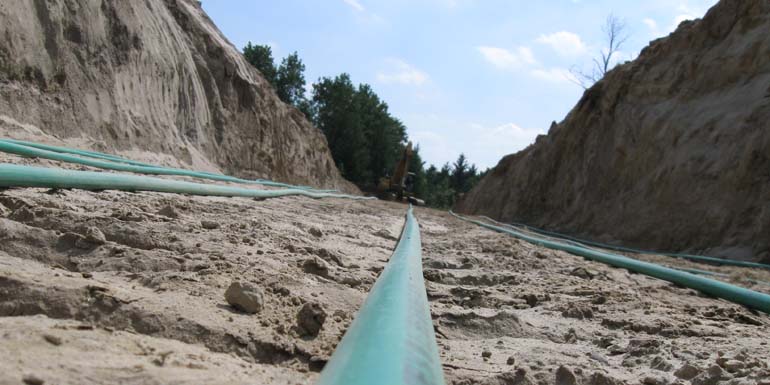
By Steve Hamoen
Given the seasonal shifts in the Canadian climate, indoor pools are a luxurious, value-added item for a homeowner, offering fitness and recreational enjoyment 365 days a year. For the heating, ventilation and air conditioning (HVAC) industry, indoor pool environments pose a unique challenge in terms of humidity control and its associated costs. While commercially packaged humidity units have their strengths, there are tremendous gains to be made in leveraging hydronic and geothermal technology to satisfy consumer demand for energy-efficient indoor pool design.
Dehumidification units for commercial pools
Commercially available humidity control packaged units for an indoor pool environment have existed for a long time and typically satisfy the following conditions:
- Space heating/cooling;
- Dehumidifying; and
- Pool water heating.
While these units are efficient, they tend to function best when responding to multiple conditions in the indoor pool environment, such as calls for space cooling and dehumidification or pool heating and dehumidification. Energy is shared as pool dehumidifiers extract heat from the air in the room to cool or dehumidify it, and then transfer the ‘free’ recovered heat to the pool water or to supplement space heating. Moisture captured on the air coil returns to the pool, leaving a comfortable living environment indoors.
In circumstances where only one or two conditions in the room need to be met (e.g. when the unit recognizes the water temperature is adequate, but the room needs to be cooler or the humidity  controlled), the system will typically respond like a traditional air conditioning unit. In this instance, it will start transferring heat in the air to an outdoor condenser. While this works, it is not the most efficient way to use the energy, particularly in a climate where daily temperature swings can mean heat might be needed later in the evening. This is where hydronic systems can dramatically impact HVAC design in indoor pools.
controlled), the system will typically respond like a traditional air conditioning unit. In this instance, it will start transferring heat in the air to an outdoor condenser. While this works, it is not the most efficient way to use the energy, particularly in a climate where daily temperature swings can mean heat might be needed later in the evening. This is where hydronic systems can dramatically impact HVAC design in indoor pools.
Hydronic systems
The term ‘hydronic’ refers to using liquid, such as water, as the mechanism for heat transfer in heating and cooling systems. Its greatest asset is the flexibility it offers—heating can be created from any source (e.g. a boiler, geothermal, electric, wood, solar, etc.) or redistributed from another source that is trying to reject heat, such as a cooling process.
Rather than reject heat from an indoor space via an outdoor condenser, to cool down the room, as noted in the earlier example, the heat can be sent via a hydronic system to a ‘buffer’ tank as warm water, which can be used in other processes. Secondary processes that can benefit from consumption of this relatively ‘free’ heat include floor warming, preheating domestic water, spa heating or hydronic forced-air heating elsewhere in the building. Once the tank capacity is maximized, the heat is then directed elsewhere (e.g. to a water feature, outdoor chill tower or condenser, sprinkler system or geothermal system).






